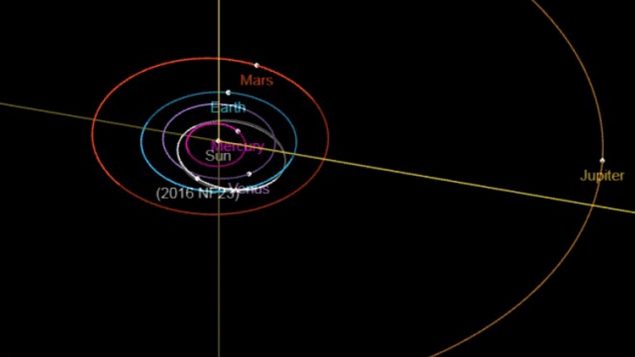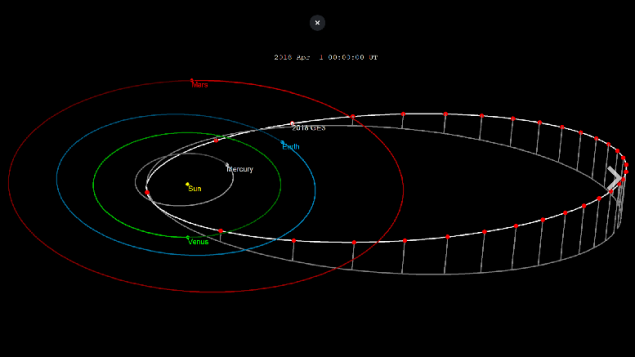
Near Earth Object- NEO
Asteroids are given rather mundane names like 2015 FP118, or 2017 SL16. But what is exciting, or rather, extremely worrisome is when they come close to Earth.
Asteroids striking the Earth in the past wiped out the dinosaurs. Another asteroid estimated at a mere 50-100 metres wide struck remote Siberia in 1908 destroying about 2,000 square kilometres of forest with the heat and shock wave felt by people 60 km away.
This week, news reports have been referring to asteroid 2016 NF23 using such words as “warning” or “dangerously close” or “threatening”
The asteroid, and others, will pass close to Earth today, tomorrow and Thursday. But “close” is relative.
NF23 is somewhere around 100 metres in size and travelling at 30,000 km/h, and if it did hit Earth the damage would be disastrous.
However, the current news items concerning the threat posed by NF23 are shall we say, a bit exaggerated when you consider that it will in fact pass tomorrow at a distance about 13 times that between the Earth and the moon, or roughly about 5-million kilometres from Earth.

White track is NF23, Blue track is the Earth. It looks close, but the asteroid will in fact pass many millions of kilometres from the Earth. (JPL)
Lindley Johnson, NASA’s planetary defence officer, wrote in an email to NBC-MACH, “There is zero chance of this asteroid impacting Earth for the foreseeable future. We don’t know why someone in the media has chosen to sensationalize a relatively mundane pass of this object.”
In fact, another asteroid, 2016 GK135 will pass “close” to the Earth today, at 16 times the distance between the Earth and moon. And while some media have sensationalised NF23 passing tomorrow, another asteroid 1998 SD9, albeit about half the size, will also pass tomorrow, but even closer at just over 4 times Earth to moon distance
YIKES! Close call, near miss!
What might be rather more disconcerting however was 2018 GE3.
In April it surprised scientists who only noticed it some 21 hours before it whizzed right between the Earth and moon. Now that is close!

Asteroid 2018 GE3 track. This one, passing in April, was close.!
(Tomruen-wiki)
This asteroid, estimated at between 50-100 metres in diameter was travelling at well over 100,000 km/h
Although scientists say most of it would likely have burned up in the atmosphere, it is still bigger than the meteor that exploded over Chelyabinsk, Russia in 2013 that damaged over 7,000 buildings and injured about 1,500, mostly from flying glass.
Good news, maybe
In 2017, NASA said there were no known asteroids that have a chance of hitting Earth for at least 100 years.


